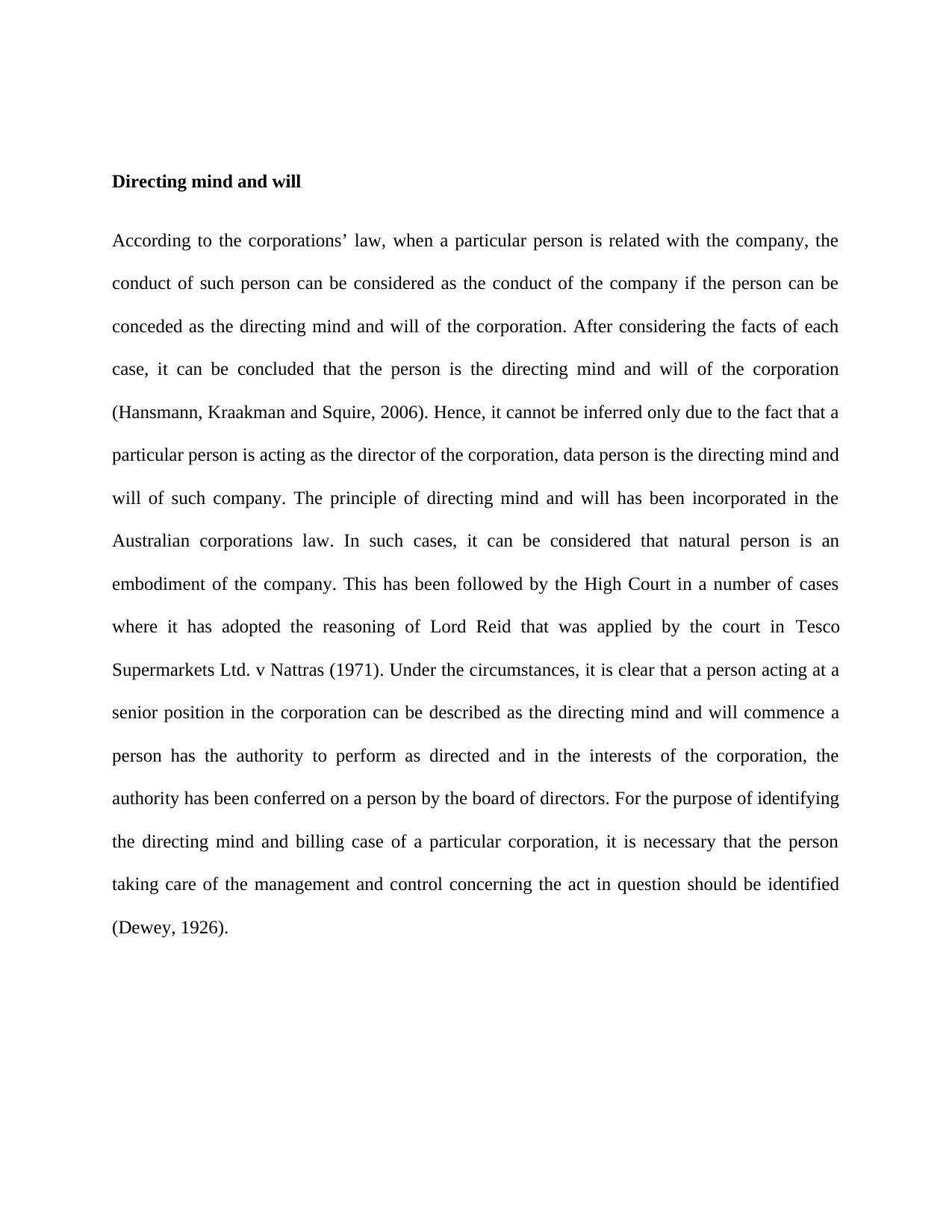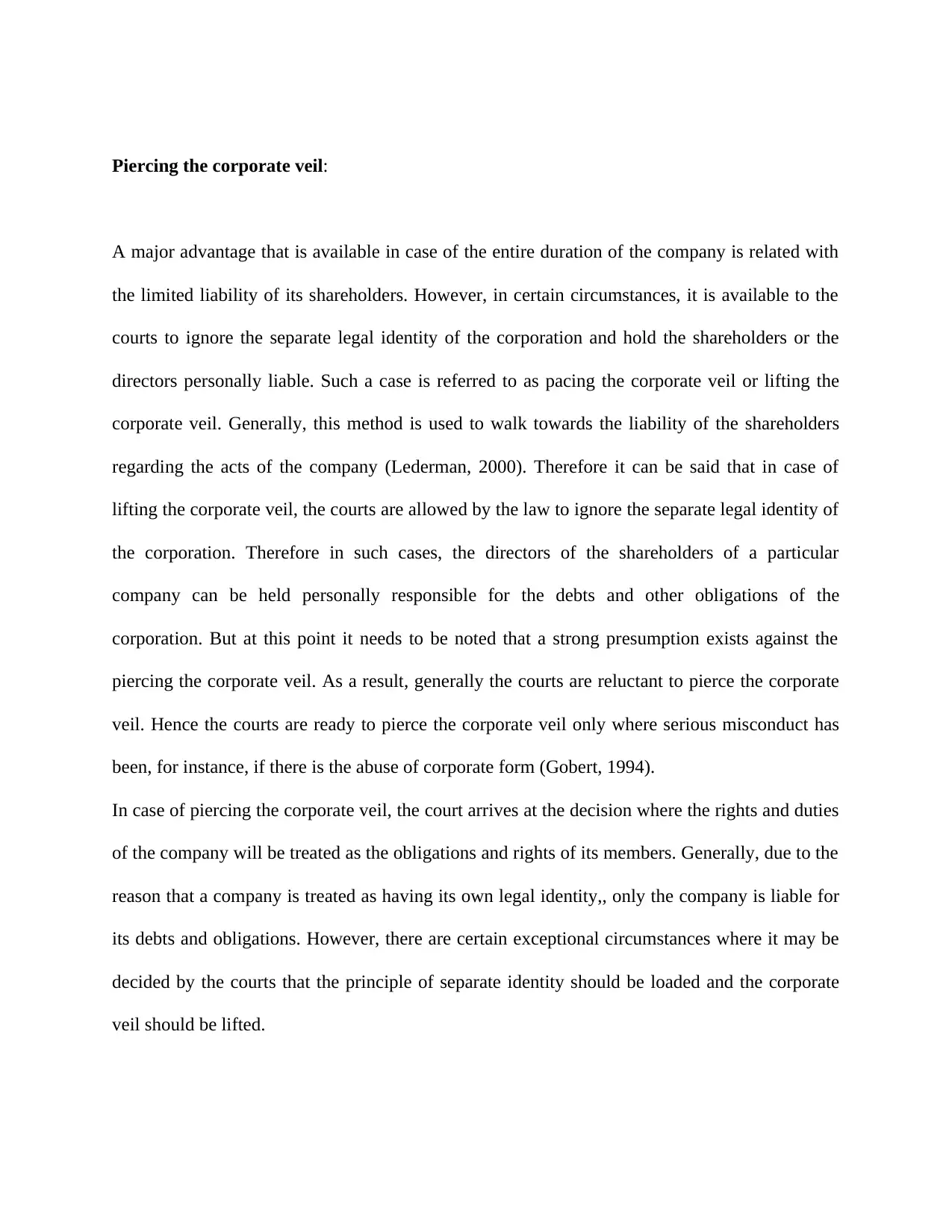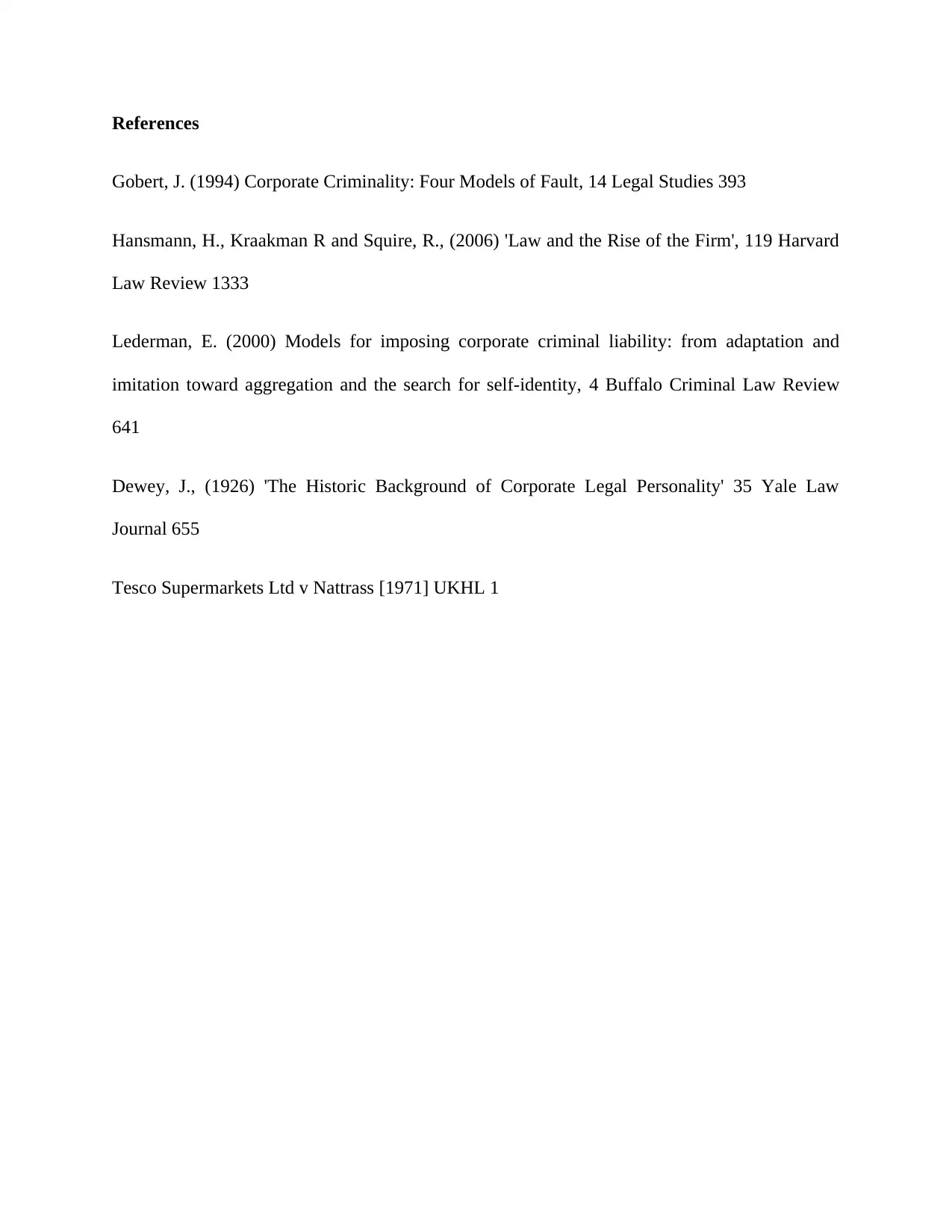Corporate Law: Directing Mind and Will & Piercing the Corporate Veil
VerifiedAdded on 2020/04/07
|3
|735
|173
Essay
AI Summary
The essay discusses two critical aspects of corporate law: the concept of 'Directing Mind and Will', which pertains to identifying individuals within a corporation who effectively embody its actions and decisions, and 'Piercing the Corporate Veil', where under certain circumstances courts may disregard the separate legal identity of a company to hold shareholders or directors personally liable for the company's obligations. The former is essential in understanding accountability within corporate structures, while the latter addresses exceptions to limited liability, typically arising from serious misconduct or abuse of the corporate form. The essay references key cases and scholarly work, including Tesco Supermarkets Ltd v Nattrass, to illustrate how these legal principles are applied.
1 out of 3










![[object Object]](/_next/static/media/star-bottom.7253800d.svg)